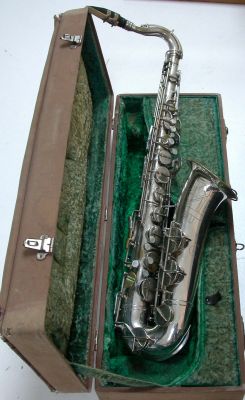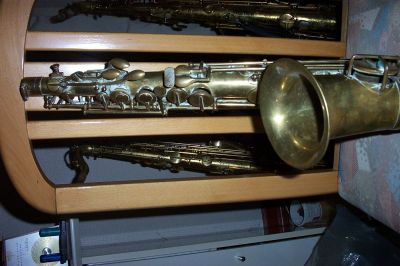Awhile back, one of my faithful readers sent me pictures of the Modell V. It's an extremely odd horn, particularly because of the serial number, 14131, which places it around 1939!
So, what's my theory? Well, starting in the late 19th century, a number of French companies started producing "reduced keywork" horns made with old tooling. This practice continued into the late 1920's. The reason for this was, essentially, to have a really, really cheap horn available as a model to "step up" from to a "real" saxophone that had all the "modern" keywork for those folks that couldn't afford $100 or so for the "real" sax. (Keep in mind, that Martin produced the "Home Model" C melody, an instrument with a keyed range from C to C, and Buescher produced, many years later, their Academy series of horns with a similar keyed range and without chromatic keywork for the purpose of having a cheap instrument for people to learn how to play sax on, but I digress. The Modell V wasn't "designed" not to have certian keys; the Modell V was probably made on a mold that never heard of the low Bb.)
Anyhow, probably during France's occupation by Germany (appx. 1940 to 1945), Keilwerth either had someone supervise production of this very cheap horn at some company in France or the design/mold for this horn was shipped to the Keilwerth plant and they used it to produce horns much cheaper than their earlier Deluxe model.
This is all conjecture, of course, but it does account for a really old French design showing up in WWII with a German manufacturer's label on it. |







